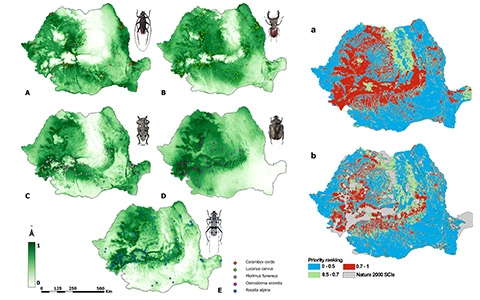„The Hermit Beetle” on PRO TV Romania
„The Hermit Beetle”, a small beetle on the verge of extinction in Europe, is closely monitored by a team of Romanian and American researchers in the Vrancea Mountains.
It seems strange, but the beetle is costly to protect.
The project, which includes other insect species, costs 3 million euros and is funded, largely, by the European Commission.
Biologists have installed tiny transmitters on the beetles, which transmit where they move and where they lay their eggs.
The beetles selected for the project weigh approximatively 15 grams. Biologists have taken care to place on their back a load of a maximum of 10% of their body weight. However, given the microtechnology used, the monitoring project of these small creatures is expensive.
The transmitters do not hinder the insects in walking and flying. The data they transmit shows that the hermit beetles cover large distances – for this type of insect – to find food and shelter.
Marian Mirea, scientific researcher at the University of Bucharest: „I can say that one of the insects moved a great deal, and I spent half an hour trying to find it, in places where I didn’t expect it to be.”
The hermit beetle belongs to the category of insects that feed on decomposing plant material and is therefore considered a forest sanitary, with an essential role in maintaining the health of green areas.
Bekka Brodie, scientific researcher at Ohio University: „These species are special because their number is declining in most countries of the European Union. In Romania, it is kind of a ‘wild west’ because we have a large number of this species of beetles.”
The hermit beetle is in danger of extinction
The hermit beetle is in danger of extinction because it no longer finds large hollows, where larvae can develop. Forest managers remove rotten and old trees from forests.
Biologists construct artificial hollows to help these beetles survive. Boxes with decomposing plant material imitate hollow trees and offer a large amount of wood for the reproduction of insects.
Silviu Chiriac, head of the Vrancea Environmental Protection Agency: „By better understanding the distance these insects travel, we can mount those artificial hollows in the vicinity of natural habitats so that in the future the insect has where to lay its eggs and have a favorable conservation status guaranteed.”
Research on these beetles is part of a larger project to study insects, which costs 3 million euros – 75% of the money comes from the European Commission and the rest from the Ministry of Environment.






